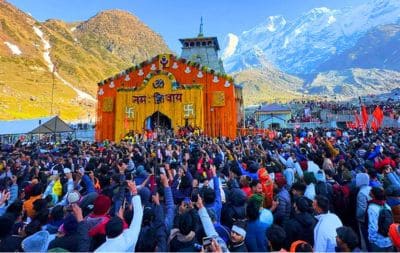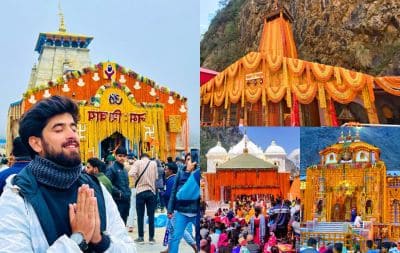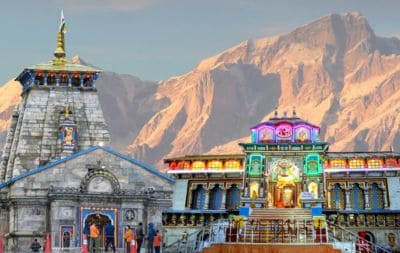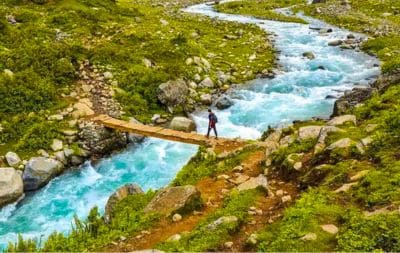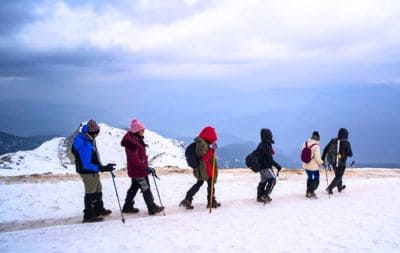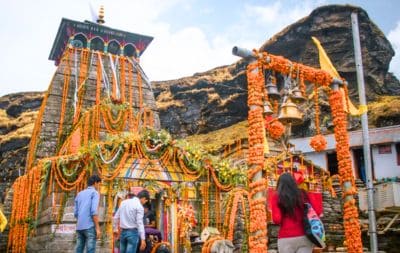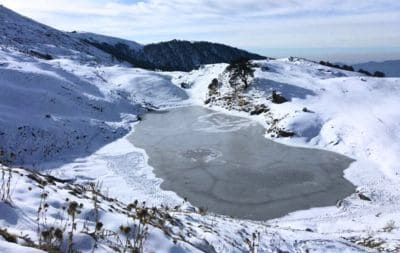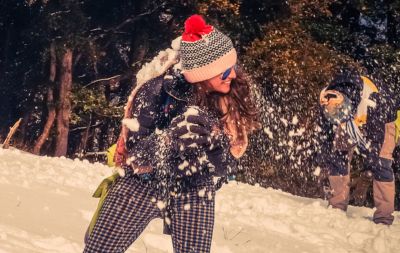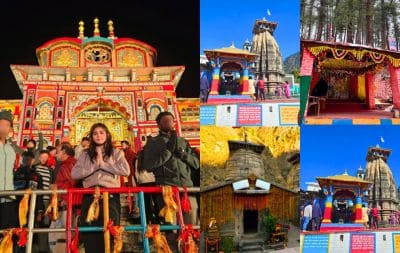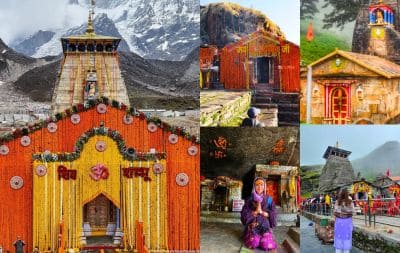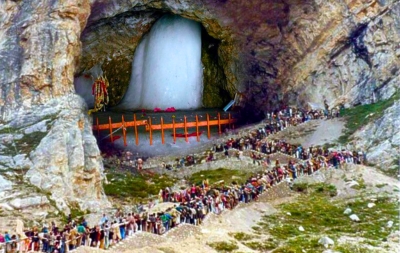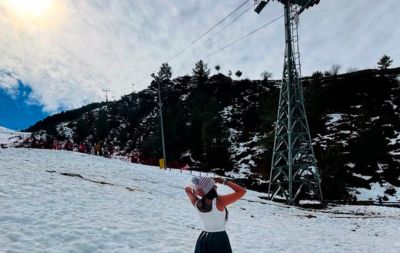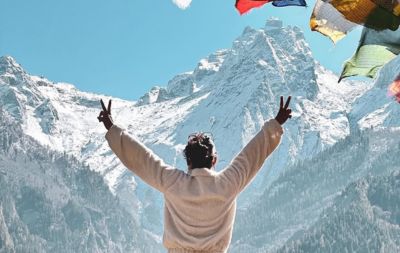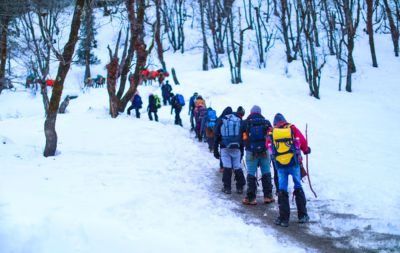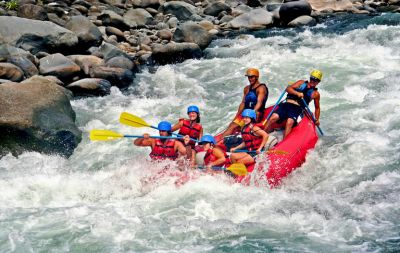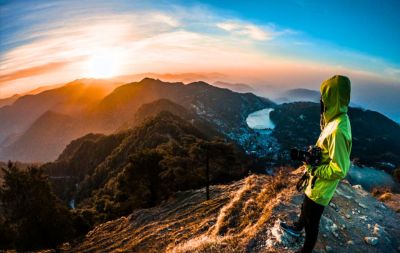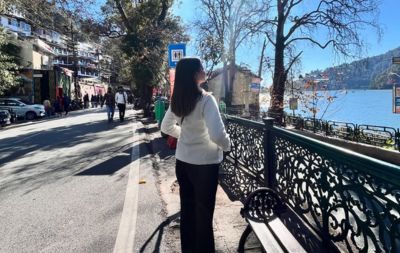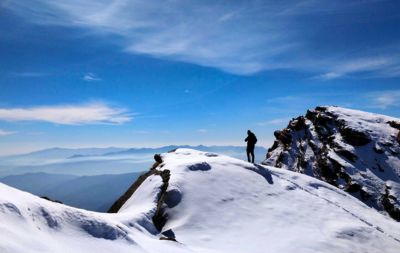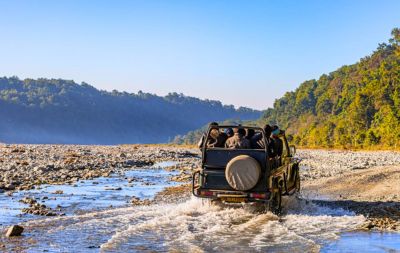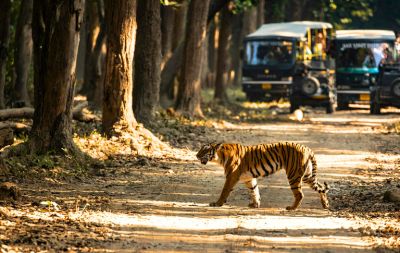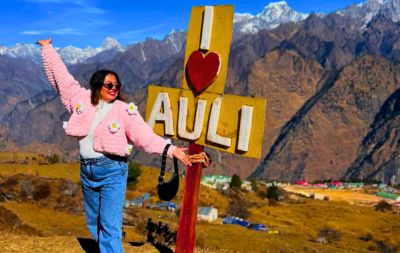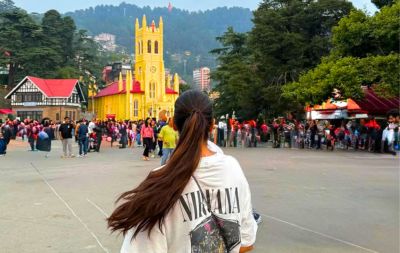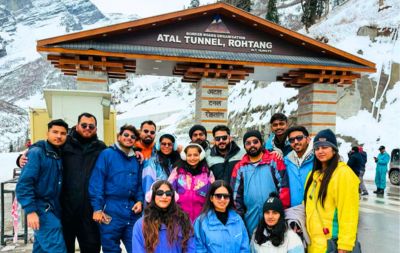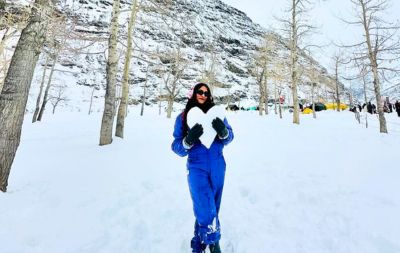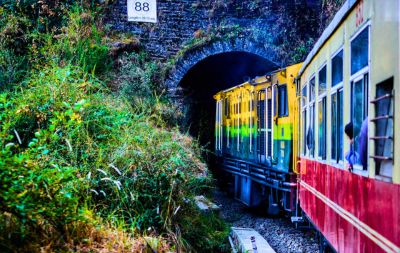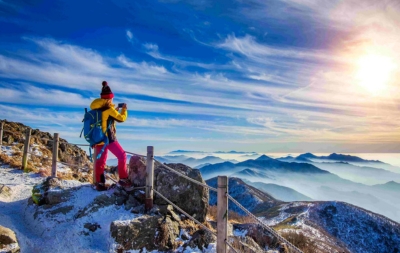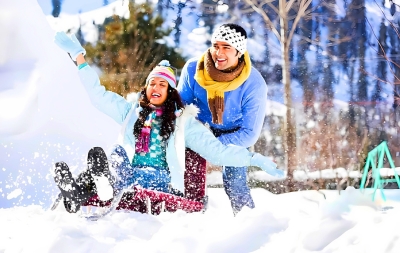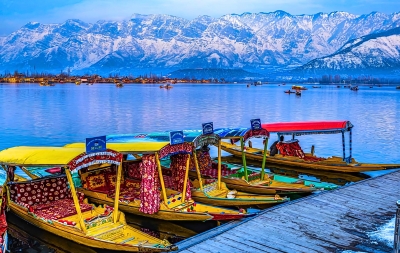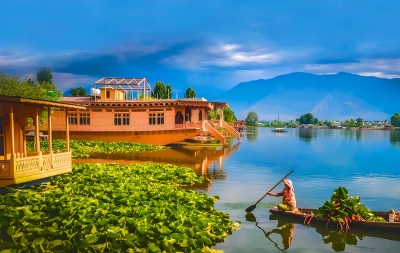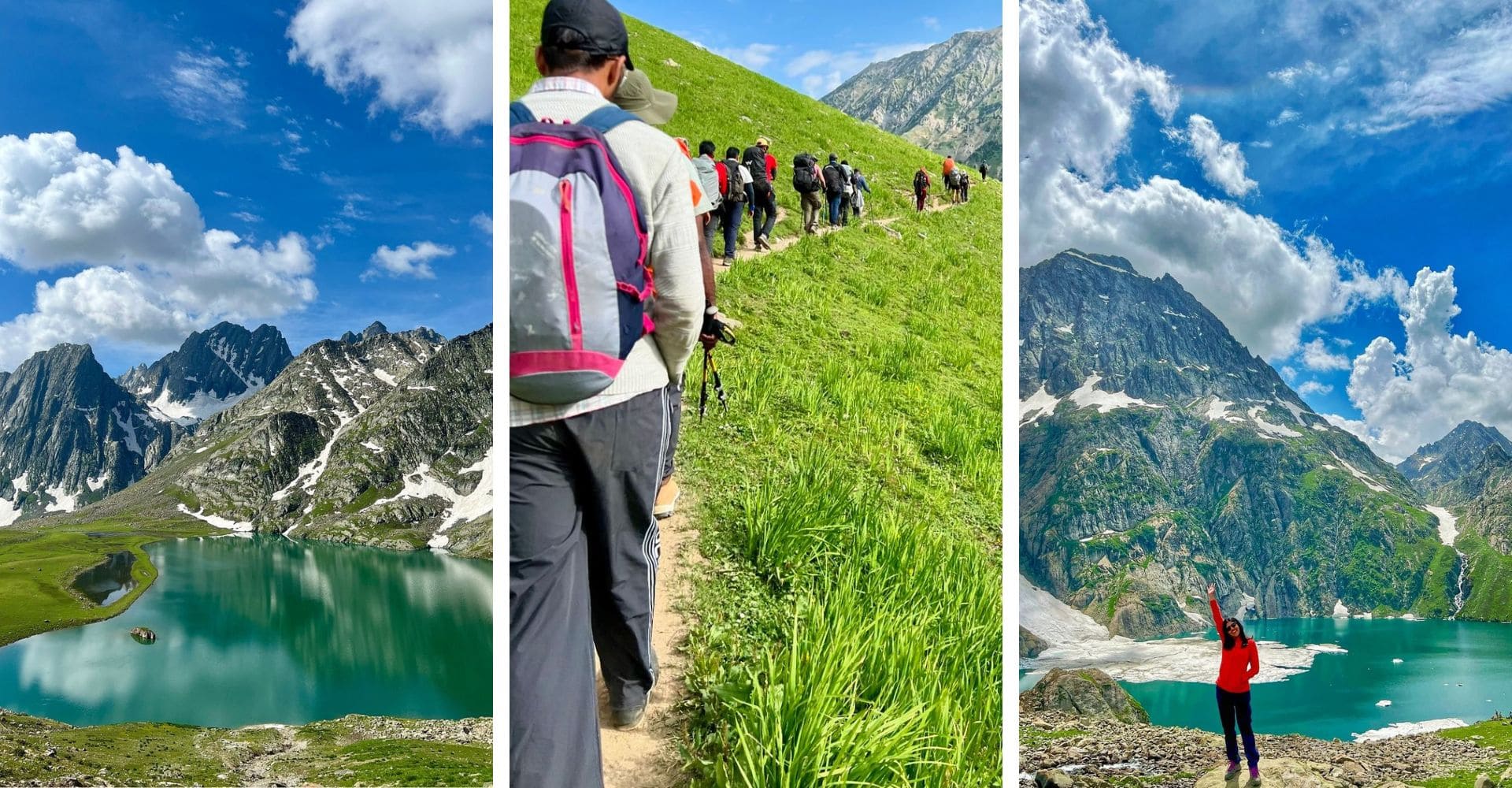
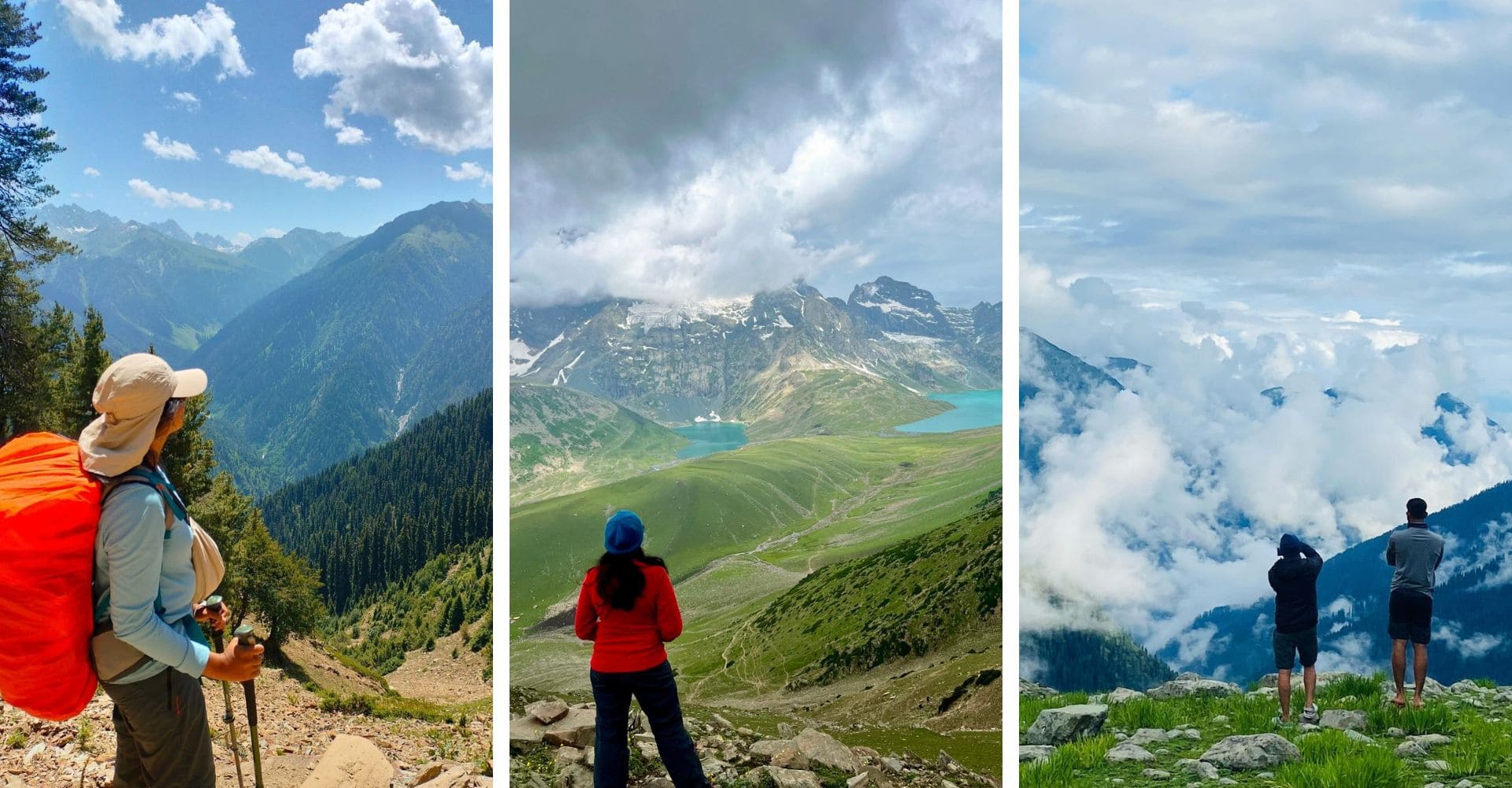

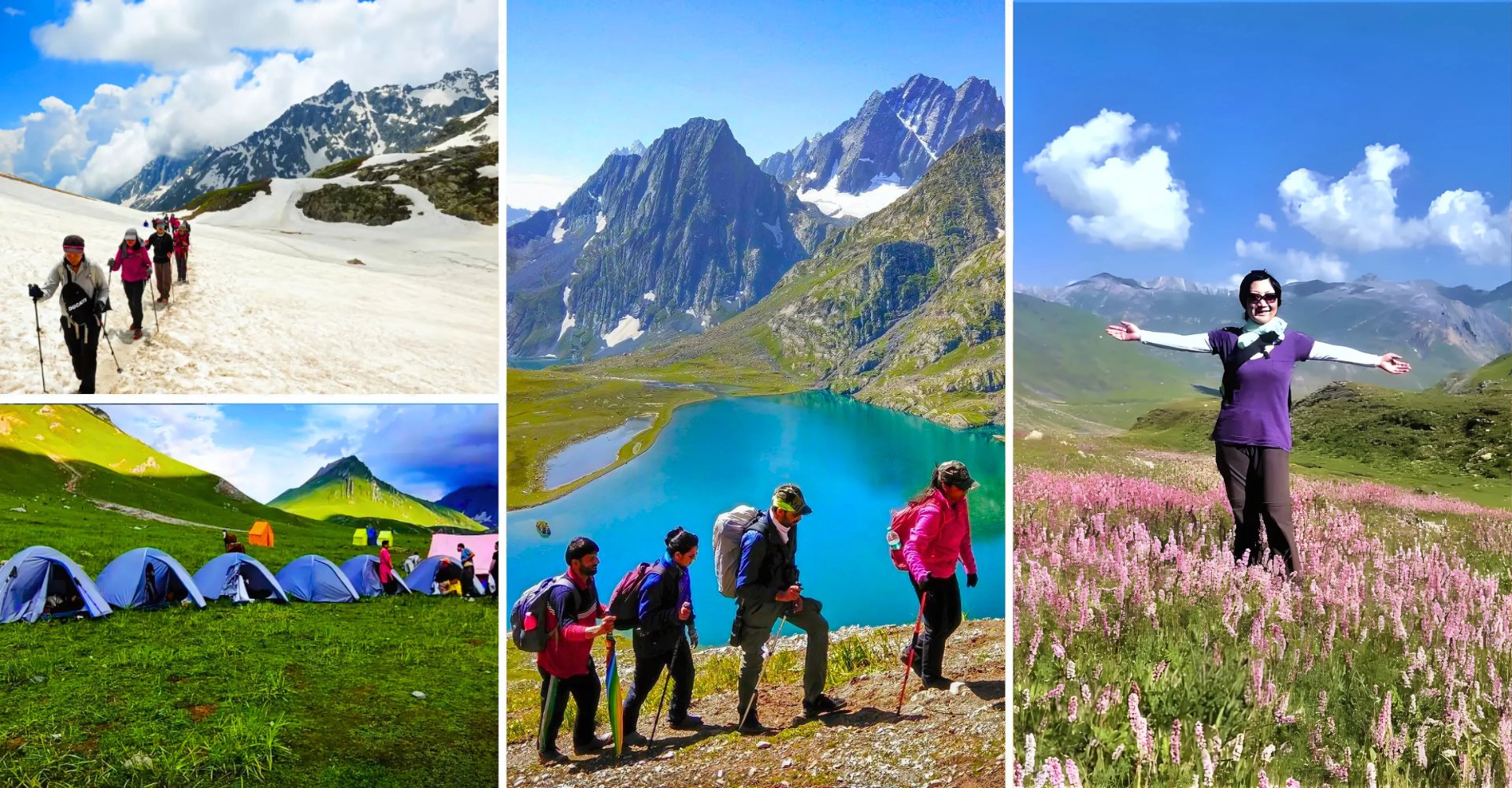
Tour Highlights
Inclusion/Exclusion
Inclusion in cost during the trek:
Exclusion in cost during the trek:
Kashmir Great Lakes Trek begins along with your arrival in Shitkadi Base Camp which is near the beautiful town of Sonamarg. This will be the start of a journey that is hardly a Himalayan dream. During the following week, you will walk through green meadows, and alpine forests, along glacier fed rivers, and across grand mountain passes, and at the moment, be in the midst of nature immensity. This excursion is a perfect mix of travel, peace and immersion to culture.
Starting with a brief acclimatization at Shitkadi, the trek regularly unfolds its splendor. As you progress, the terrain turns into extra dramatic. You will enjoy nature in its purest form—untouched by commercialization. The thing about this trek is that it is a series of 7 alpine lakes, which is each one mesmerizing than the other. In the blue serenity of Vishnusar, the mirrored perfection of Kishansar, the spiritual atmosphere of mysticism of Gangabal and Nundkol, the lakes serve as sentinels of the arid Himalayan land in a silent manner.
The hike with a length of about 70-75 kilometers in 7 days is more than a journey of beauty, it is also a test of tolerance, a cultural enlightenment and a challenge of getting lost in the current global world. When guided rightly, it is fair to say that it is suitable to the trekkers with limited experience who desire a transformational trip to the Himalayas.
Trekking through Jewel-Like Landscapes
Day 2 kicks off the actual adventure, as you hike from Shitkadi to Nichnai via dense pine forests and flower-stuffed meadows. The path offers surprising perspectives of the Sindh Valley underneath.
On Day 3, The trek to Vishnusar lake through Nichnai pass (13,100 feet) exposes you with an alpine wonder. This high-altitude lake is calmly surrounded by steep mountains, which the sky and adjacent hills reveal in the water.
On Day 4, Another upward slope is introduced, providing several of the best photogenic scenes as you hike the Vishnusar to Gadsar via the beautiful Kishansar Lake and the gigantic Gadsar Pass (13,750 ft). The bypass offers panoramic perspectives of both lakes and infinite mountain tiers. You descend to Gadsar Lake, often taken into consideration the maximum beautiful of all, surrounded by wildflowers and snow patches even in summer.
Days 5 to 6 cover the route from Gadsar to Satsar and then to Gangabal, passing rocky ridges and nonviolent meadows. Satsar Lakes (a group of 7) are sense-hidden and magical. On Day 6, descending to Gangabal and Nundkol Lakes, nestled at the bottom of Mount Harmukh, adds a religious and emotional finish to the trek earlier than your final descent to Naranag on Day 7.
Culture, Wilderness & Serenity Combined
Whereas the scenery is the superstar of the Kashmir Great Lakes Trek, the cultural richness and the peaceful atmosphere makes it more delightful. All the way to meadows around Nichnai, Gadsar you will see Gujjar, Bakarwal shepherds, who follow their flocks out in the summer.
The hike also provides a full disconnect to the digital world, no cell networks, no distraction. The farther you walk the closer you find yourself to the nature and to yourself. Camping under the Starry skies by the side of still-water lakes to the far-off sounds of flowing down the rivers, every blink is relaxing and thoughtful. The silence of the mountains, interrupted best via the chirping of birds or the clinking of cowbells, creates a meditative environment.
On the very last day, the descent from Gangabal to Naranag marks the cease of this unforgettable adventure. Though the trek ends bodily, its intellectual and emotional impact lingers for a lifetime. Its not just a trek—its a soulful Himalayan tale that every adventurer must write for themselves.
Best Season to go Kashmir Great Lakes Trek
The Kashmir Great Lake Trek winterizes best during the period between mid June and mid September. This is when the ice has melted off so as to be safe to pass through the excessive pass and the place is rich with juicy greenery, flourishing flowers and spotless lakes. June presents a contrast picture of snow and grasslands. The high months are July and August, and the due season of wildflower trails and tenting. By September the wind is crisp and the countryside glistans in the autumn colors.
there is no possibility of climbing the mountain because of the heavy snows and bad weather knocking unexpectedly outside this window. Most routes are closed by the end of September due to early snowfall. So, plan your ride and make sure that you are physically organized, as excessive height requires both health and acclimatization.
Trek Difficulty
The overall difficulty of the Kashmir Great Lakes Trek can be regarded as slightly too challenging due to the length of the route and frequent ascent and descent, in general. You will be walking about 70 70 fifty kilometers in more than 7 days including 6 8 hours of hiking every day. The major obstacles involve the passage across Nichnai Pass and Gadsar Pass of more than 13000 feet each.
Although now not technically tough, this trek is not recommended for absolute novices unless they have been educated properly. If you ave completed at least one Himalayan trek earlier than, this is a great step up. Acclimatization at Shitkadi and sluggish, steady hiking with hydration and rest helps prevent altitude sickness. Its pleasant to go along with a certified trekking operator who presents courses, porters, and the right acclimatization schedules.
How to Reach Kashmir Great Lakes Trek
To begin your adventure, first attain Srinagar, the summer season capital of Jammu and Kashmir. Srinagar Airport (SXR) is well-connected to Delhi, Mumbai, Bangalore, and other metro towns. On arrival, you can region a cab or opt for the organization pickup arranged using your trek organizer, positioned approximately eighty km from Srinagar (2-3 hours by road), in the Shitkdi Base Camp near Sonamarg.
If touring by way of teach, the closest major railway station is Jammu Tawi. From Jammu, that is a nine–to 10-hour journey to Srinagar. Buses, shared taxis, and private cabs are to be had for this course. After completing the trek in Naranag for 7 days, you will return to Srinagar by using the street, which takes about 3-4 hours. Given the sudden climate of the vicinity, its really useful to book your return transport in advance and hold at least one buffer day in your tour plan.
Day 1: Arrival at Shitkadi Base Camp
Arrive at a beautiful camp, Shitkadi, close to Sonamarg, surrounded with the aid of pine forests and river streams. This day is reserved for acclimatization and coaching. Introduce yourself to trek guide and team, practice with your device and share a stroll around the campsite. The trek has an atmosphere of chilly air, green vegetation and snow-covered mountaintops. Waiting upon you there is a nonviolent night under the stars.
Day 2: Trek from Shitkadi to Nichnai
Begin your journey with a steady scrambled up through congested forests and open grassland. The footpath provides a scenic overlook on the Sonamarg Valley, and as well as the Glacier-Fed Sindh river below. Go along a dotted shepherd paths with wildflowers and browsing sheep along the paths.
Day 3: Nichnai to Vishnusar Lake
Today you will get to cross Nichnai Pass (13,100 ft) which is your first significant altitude gain. The trail would lead you through rocky as well as through alpine terrain before you would find yourself running down the green meadow. The still waters of the beautiful lake reflect the surrounding mountains in such a perfect postcard appearance as you approach Vishnusar Lake. Spend one night by roaming around the lake and relaxing on its bank.
Day 4: Vishnusar to Gadsar via Kishansar Lake and Gadsar Pass
Begin early and hike along the beautiful lake of Kishansar and then climb up to the spectacular Gadsar Pass, the highlight of the trip that stands at 13,750 ft. The bypass provides a 360 degree scenery of the lakes and Himalayan mountains around it. Take a step down in flower meadows to Gadsar Lake which is most often thought to be the loveliest on the route with crystal clear water. Lake-side camp with wildflower entwining it all.
Day 5: Gadsar to Satsar
Leave Gadsar and walk along a combo of grassy plains, rocky terrain and brief military checkpoint. The route ends up in the distant Satsar Lakes, a chain of 7 alpine lakes nestled in a calm valley. It is a great place of relaxation and bonding with pristine nature. Are able to spend a relaxing evening and spend a night alone under the open sky.
Day 6: Satsar to Gangabal Twin Lakes
Your new route today involves you traversing through boulder areas and climbing up a steep ridge which provides good views of Mount Harmukh. Visit the fabulous twin lakes of Gangabal and Nundkol that are located at the bottom of the mountains. The color of the lakes of turquoise water and the religious atmosphere can never be forgotten. Establish your last camp by the lakes and absorb the breathtaking glory.
Day 7: Gangabal to Naranag and Departure
Following a good breakfast descend into pine forest and shepherd paths to the traditional village of Naranag. It is a steep and picturesque route giving vivid views of the valley below. Your trek ends at Naranag. Good Bie to the mountains and then you can drive back to Srinagar, with the memories of one of the most beautiful alpine journeys of India.
| Essential Documents | |
|---|---|
|
Government-issued Photo ID
Trekking Registration Permit (if required)
Medical Fitness Certificate
Emergency Contact Details
Passport-sized Photographs
|
|
| Clothing & Footwear | |
|
Warm Jackets & Sweaters
Thermal Innerwear (2 pairs)
Raincoat/Poncho with Hood
Comfortable Trek Pants (3–4)
Woolen Gloves & Warm Cap
Woolen & Cotton Socks (4–5 pairs)
Trekking Shoes (Waterproof)
Slippers/Sandals for Camps
|
|
| Personal Essentials | |
|
Rucksack (50-60 Ltr.)
Daypack for Daily Use
Headlamp/Torch with Extra Batteries
Water Bottle / Hydration Pack
Sunglasses (UV Protected)
Sunscreen (SPF 40+)
Lip Balm & Moisturizer
Trekking Pole (Recommended)
|
|
| Toiletries & Hygiene | |
|
Toothbrush, Toothpaste, Soap
Wet Wipes & Tissue Papers
Quick-Dry Towel
Hand Sanitizer
Toilet Paper / Sanitary Pads
Comb / Small Mirror
|
|
| Health & Safety | |
|
Personal Medicines & First Aid Kit
Energy Bars / Dry Fruits / Glucose
Power Bank
Plastic Bags (Trash/Wet Clothes)
|
|
At Shree Kedar Yatra - SKY, your safety is our top priority. Whether you are a solo traveler, a couple, or a family group, we ensure that every aspect of your Kashmir Great Lakes Trek is well-managed, secure, and supported by local experts. Below are the key safety measures we follow and essential travel tips for your peace of mind:
Payment Terms
Cancellation Charges
| Notice Period Before Departure | Applicable Charges |
|---|---|
| 15 days or more | 10% of total amount |
| 7 to 14 days | 30% of total amount |
| Less than 7 days | 100% (No refund) |
Important: No refund will be provided for cancellations due to natural disasters, political unrest, lockdowns, or health issues. If a traveler tests COVID-positive and provides valid documentation, a credit note will be issued for future travel.
General Terms and Conditions
Complaints and Disputes
All complaints must be submitted within seven days after the trip concludes. The company reserves the right to make the final decision on all matters.
Want a Detailed Itinerary on Whatsapp?
